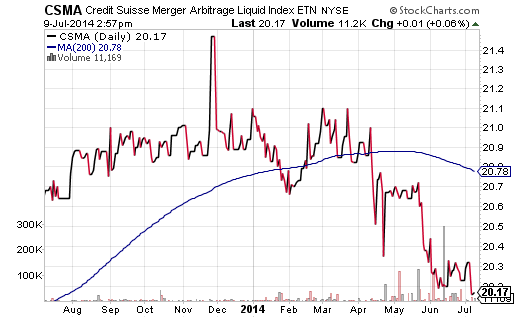Government debt around the globe is roughly 40% higher than it was just five-and-a-half years ago. In fact, the majority of “top 10″ economies, including the United States, carry untenable debt burdens of more than 100% debt-to-GDP ratios.
How dangerous are these circumstances? Well, imagine a family that earns $120,000 per year and carries credit card debt totaling $120,000. Can the family survive without going bankrupt? They would probably need to drastically curb their standard of living, pray that their employment prospects never dim and hope that the interest rate on the outstanding debt never climbs. Then, the family could conceivably hang in there by chipping away at the credit card principal or, at the very least, pay the minimum interest required. Regardless, avoiding financial ruin would not be easy.
Governments, of course, are not families. Their central banks can employ policies that force interest rates lower. Yet manipulating rates does not guarantee that an economy will expand, nor does it ensure that investors would continue to trust the country’s debt instruments. The euro-zone crisis in 2011 demonstrated investor unwillingness to purchase the government bonds of Greece, Italy, Portugal and Spain. The boycott of the sovereign obligations occurred because those obligations had grown at a much faster clip than the respective economies.
Since the euro-zone debacle in the summer of 2011, however, investors have piled into higher yielding assets and higher appreciating assets. Thanks in large part to the U.S. Federal Reserve’s electronic money creation and corresponding zero-interest rate policy, savers have had little choice but to take some risks in higher yielding securities. More critically, corporations have used ultra-low interest rates to finance the purchase of their stock shares, fueling a bull market that has vastly outperformed a substandard economic expansion.
How long can risk assets succeed in spite of lumbering economic growth? How long can those assets perform when government debt obligations are growing more rapidly than the economy that the government is supposedly helping? Perhaps for as long as companies are willing to acquire their own stock shares.
Recently, though, the data on stock buybacks has been somewhat subdued. According to TrimTabs Investment Research, the monthly average for stock buybacks in 2013 had been $56 billion. Over the last two months? $24 billion and $23 billion. Obviously, two months does not a trend make. On the other hand, as stock prices notch record after all-time record, CEOs become less inclined to buy shares. Indeed, judging by the sheer volume of merger and acquisition activity taking place, it appears that gobbling up a competitor or aligning with a strategic partner has replaced the buyback phenomenon.
Is it possible to profit from the shift from buyback to big deal making? Theoretically, yes. There are three exchange-traded vehicles for the merger-and-acquisition (M&A) enthusiast. The IQ Merger Arbitrage ETF (NYSE:MNA) has been reasonably successful at identifying takeover targets while shorting other stocks.
Another possibility is Credit Suisse Merger Arbitrage Liquid ETN (NYSE:CSMA). This exchange traded note takes long positions in targets while simultaneously shorting the acquiring firm. The results seem to indicate that the strategy has not been successful.

Supporters maintain that arbitrage strategies are remarkably potent in diversifying away from stock and bond risk. Moreover, hedge funds have used them with varying degrees of success at wealth accumulation. From my vantage point, however, these exchange-traded trackers do not have the liquidity necessary for reducing the exposure to risk assets in a 2nd half sell-off. Without question, the probability for such an event is high. I would rather have a bit of cash on the sidelines, while maintaining a defensive posture in iShares USA Minimum Volatility (NYSE:USMV) as well as an opportunistic posture in Asia via iShares MSCI Asia excl Japan (NASDAQ:AAXJ).
Disclosure: Gary Gordon, MS, CFP is the president of Pacific Park Financial, Inc., a Registered Investment Adviser with the SEC. Gary Gordon, Pacific Park Financial, Inc, and/or its clients may hold positions in the ETFs, mutual funds, and/or any investment asset mentioned above. The commentary does not constitute individualized investment advice. The opinions offered herein are not personalized recommendations to buy, sell or hold securities. At times, issuers of exchange-traded products compensate Pacific Park Financial, Inc. or its subsidiaries for advertising at the ETF Expert web site. ETF Expert content is created independently of any advertising relationships.

